News
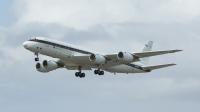
NASA Takes to Kansas Skies to Study Nighttime Thunderstorms
NASA has joined a multi-agency field campaign studying summer storm systems in the U.S. Great Plains to find out why they often form after the sun goes down instead of during the heat of the day.

Students Study Earth from NASA Flying Laboratory
Thirty-two undergraduate students are participating in an eight-week NASA Airborne Science field experience designed to immerse them in the agency's Earth science research.

Operation IceBridge Concludes 2015 Arctic Campaign
Operation IceBridge wrapped up its seventh Arctic deployment on May 21, when NASA’s C-130 research aircraft with the mission’s researchers and instruments on board departed Thule Air Base in Greenland and headed to NASA's Wallops Flight Facility in Virginia.
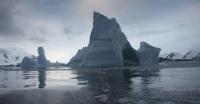
NASA Study Shows Antarctica’s Larsen B Ice Shelf Nearing Its Final Act
A new NASA study finds the last remaining section of Antarctica's Larsen B Ice Shelf, which partially collapsed in 2002, is quickly weakening and likely to disintegrate completely before the end of the decade.

NASA Airborne Mission to Study Polar Winds
NASA’s DC-8 aircraft began a series of science flights based out of Keflavik, Iceland, on May 11 aimed at studying Arctic polar winds.
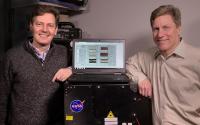
New Mission to Provide Snapshot of ‘Average’ Atmosphere
A new NASA Earth Venture mission called the Atmospheric Tomography Mission (ATom) aims to provide a snapshot of the average atmosphere. ATom will systematically measure reactive gases and aerosols over the Atlantic and Pacific Oceans, where the atmosphere is relatively clean and sensitive to change.
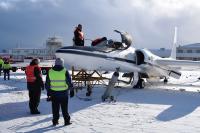
NASA ER-2 Completes Suomi-NPP Arctic Validation Mission
NASA’s high-altitude ER-2 aircraft completed a series of validation flights last month in support of the Earth-observing NASA/NOAA Suomi National Polar-orbiting Partnership satellite, or Suomi NPP. The campaign was jointly sponsored by NASA and NOAA and based out of Keflavik, Iceland conducting science flights between March 7 to 31, 2015.

IceBridge Overflies Norwegian Camp On Drifting Sea Ice
Operation IceBridge successfully overflew a drifting Norwegian research vessel locked into the sea ice in the Fram Strait during its first flight of the 2015 Arctic field season.
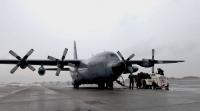
Operation IceBridge Debuts Its Seventh Arctic Campaign
NASA's Operation IceBridge, an airborne survey of polar ice, successfully completed its first Greenland research flight of 2015 on March 19, thus launching its seventh Arctic campaign. This year’s science flights over Arctic sea and land ice will continue until May 22.
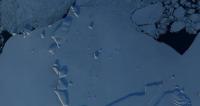
UTexas-NASA Study Sees New Threat to East Antarctic Ice
Researchers have discovered two seafloor troughs that could allow warm ocean water to reach the base of Totten Glacier, East Antarctica's largest and most rapidly thinning glacier.
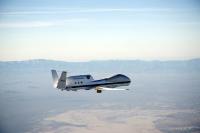
NASA and Partners begin 2015 CAST ATTREX Mission
NASA scientists will study the movement of water vapor and greenhouse gases in the tropical tropopause region during this year's CAST ATTREX Mission

NASA Brings the Spirit of Adventure into the Classroom
Across the United States and around the world, students now can participate in deployed NASA Airborne Science Missions.
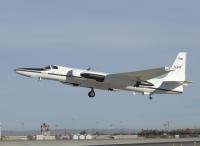
NASA Aircraft, Spacecraft Aid Atmospheric River Study
NASA is part of a major field campaign studying intense atmospheric river storms from the ocean, land, air and space.
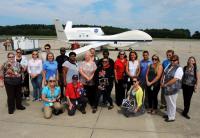
NASA Hurricane Mission Connects to K-12 Classrooms
The HS3 team shared the excitement of their scientific mission with K-12 students and teachers across the United States through summer teacher workshops, educator days at NASA Wallops, in-person classroom visits by mission personnel, live remote classroom chats and flight/hurricane tracking.
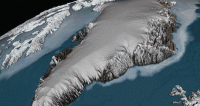
NASA Data Peers into Greenland’s Ice Sheet
Scientists using ice-penetrating radar data collected by NASA’s Operation IceBridge and earlier airborne campaigns have built the first-ever comprehensive map of layers deep inside the Greenland Ice Sheet.
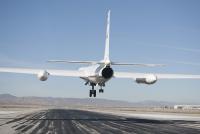
NASA Airborne Science Aircraft Monitoring the Environment
Climate scientists are using NASA's flying assets to gather information about how the global Earth system is changing and how it is predicted it may change in the future.
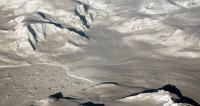
West Antarctic Melt Rate Has Tripled: NASA-UC Irvine
Airborne measurements along with data from satellite observations and other sources shows that the melt rate of portions of West Antarctica has tripled in the last 10 years.
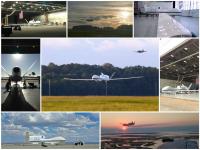
HS3 Hurricane Mission Investigated Four Tropical Cyclones in 2014
NASA's Hurricane and Severe Storm Sentinel, or HS3, mission investigated four tropical cyclones in the 2014 Atlantic Ocean hurricane season: Cristobal, Dolly, Edouard and Gonzalo. The storms affected land areas in the Atlantic Ocean Basin and were at different stages during the investigations.

NASA Airborne Campaigns Tackle Climate Questions from Africa to Arctic
Five new NASA airborne field campaigns will take to the skies starting in 2015 to investigate how long-range air pollution, warming ocean waters, and fires in Africa affect our climate.

IceBridge 2014 Antarctic Campaign Concludes
NASA’s Operation IceBridge completed four more surveys of the Antarctic, bringing the mission’s six-week-long field campaign to a close.
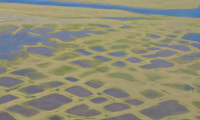
NASA: Alaska Shows No Signs of Rising Arctic Methane
Despite large temperature increases in Alaska in recent decades, a new analysis of NASA airborne data finds that methane is not being released from Alaskan soils into the atmosphere at unusually high rates, as recent modeling and experimental studies have suggested. The new result shows that the changes in this part of the Arctic have not yet had enough impact to affect the global methane budget.

Visitors Fly with NASA’s Operation IceBridge
NASA’s Operation IceBridge hosted two high-profile visitors, U.S. Ambassador to Chile Michael Hammer and NASA Chief Scientist Ellen Stofan.
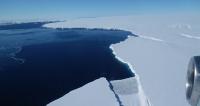
USS Constellation and Thurston Island
NASA’s Operation IceBridge collected some rare images on a flight out of Punta Arenas, Chile on a science flight over western Antarctica dubbed Ferrigno-Alison-Abbott 01.
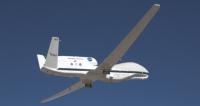
Global Hawks Mark Five Years of NASA Science Flights
NASA's pair of remotely operated Global Hawk Earth science aircraft marked a milestone on Oct. 23, the fifth anniversary of the first NASA flight by a Global Hawk aircraft.

It's Alive! Ames Engineers Harvest and Print Parts for New Breed of Aircraft
It's more an engineer's dream than nightmare - to rapidly prototype and redesign aircraft using 3-D printed parts. That's just what a team of student interns and engineers at NASA's Ames Research Center in Moffett Field, California, got to do: custom-build aircraft by repurposing surplus Unmanned Aerial Vehicles (UAVs). Grafting fuselages side-by-side adds more motors, propellers and batteries to improve power and performance capacity. By lengthening the wings, the team was able to improve aerodynamic efficiency and help extend the flight time of small, lightweight electric aircraft.
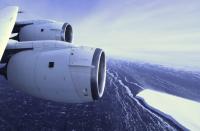
NASA Begins Sixth Year of Airborne Antarctic Ice Change Study
NASA is carrying out its sixth consecutive year of Operation IceBridge research flights over Antarctica to study changes in the continent’s ice sheet, glaciers and sea ice. This year’s airborne campaign, which began its first flight Thursday morning, will revisit a section of the Antarctic ice sheet that recently was found to be in irreversible decline.

ARISE Researchers Close out Alaska Field Campaign
Data from ARISE will help scientists understand the relationship between ocean and ice surfaces and clouds and the role that relationship plays in the overall climate system. In addition, ARISE data will help researchers further improve methods of interpreting satellite data in the Arctic.
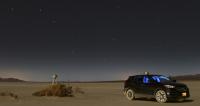
Preparing For Antarctic Flights in the California Desert
NASA IceBridge scientists conduct GPS-guided ground tests at El Mirage to aid calibration of laser altimeter for precise readings over Antarctica.
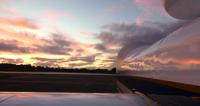
Global Hawk 872 Return Marks 100th NASA Flight
High-altitude science aircraft hits milestone on its return to NASA Armstrong Sept. 30 after 10 science flights in NASA's 2014 HS3 mission.

NASA's HS3 Looks Hurricane Edouard in the Eye
Scientists on NASA's HS3 mission got lucky on September 17 when the remotely piloted Global Hawk dropped a sonde that fell in Hurricane Eduoard's eye and spun all the way down to the surface
